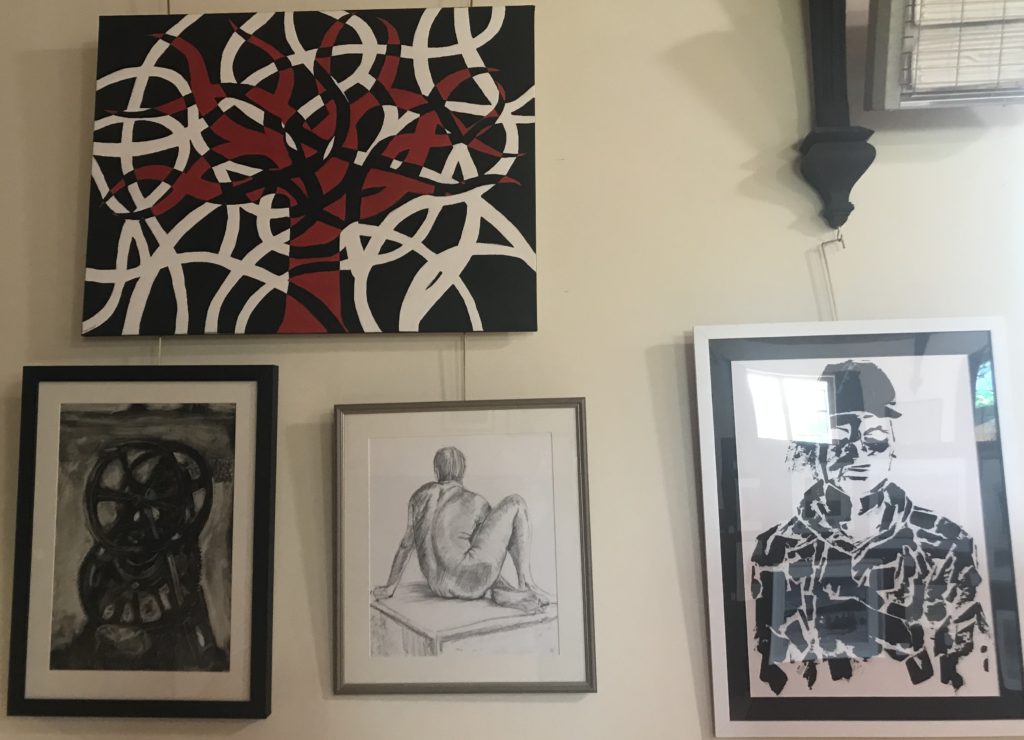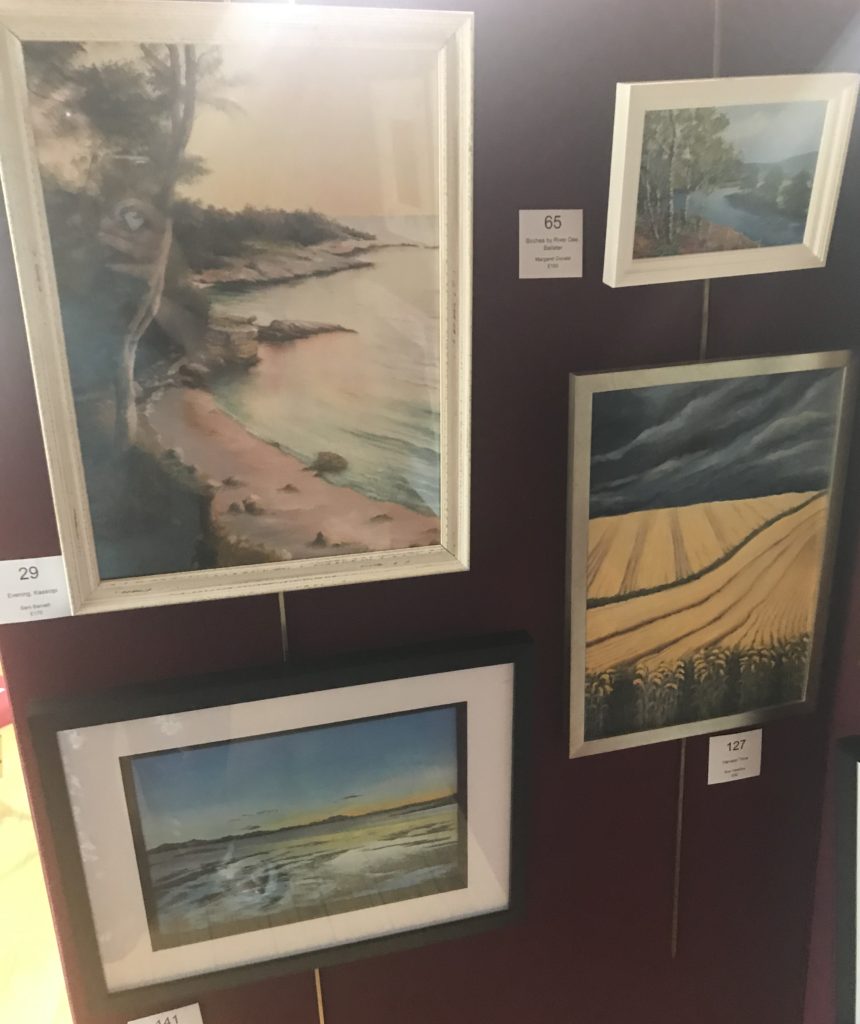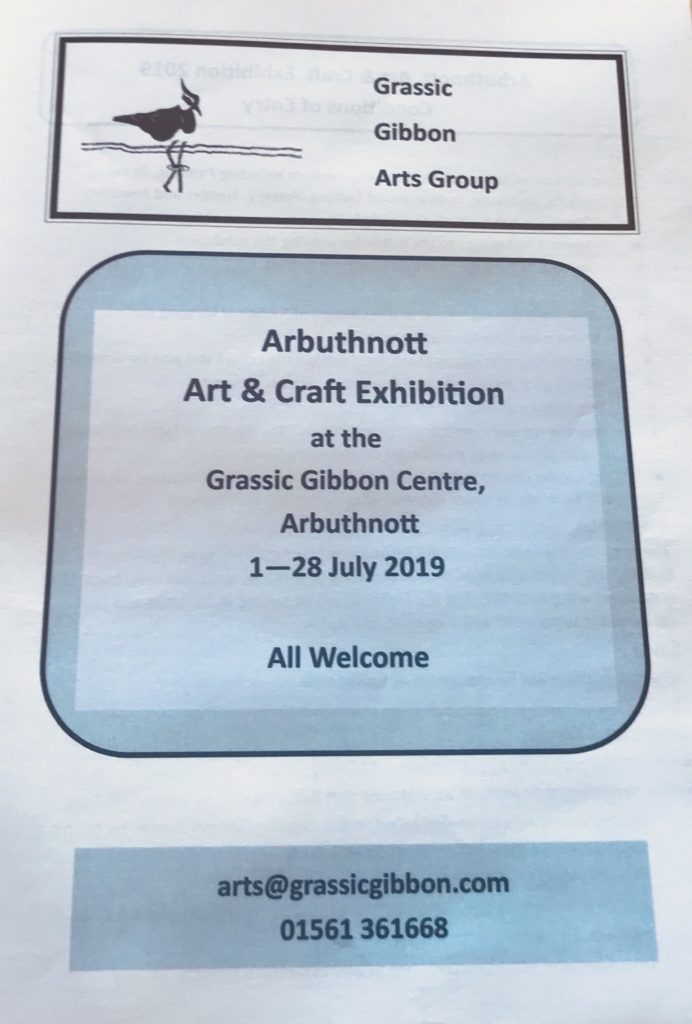
Stepping into the Arbuthnott Art and Craft Exhibition at the Grassic Gibbon Centre, four large images on the immediate left hand wall claim my attention first. In black, white, and an almost burgundy red, these four unrelated pieces hold together as a set in color, form, and tone. Their diverse subject matter seems to speak to each other in ways that Leslie Mitchell (Lewis Grassic Gibbon) would have appreciated. The curving, asymmetrical branches of Katie Hillard’s Trees find answer in the industrial toothed gears of Gaye Thornton-Kemsley’s Salmon Wench. The soft and timeless nude body shapes in Life Study 2, by Elizabeth Brown, confront the blocked-out pattern of a very modern Portrait by Cammy Adam. Already, in this first set at the exhibition, we find nature and industry, soft and hard, human and the inanimate, ageless and of an age–conflicts that appear throughout Gibbon’s writing. Together, these pieces create a collective reckoning of what it means to be alive in a particular age.

As I continue through the large exhibition, I find a diversity of subject, style, and medium that again, collectively, makes a sort of argument about what it is to live in this age. With many of the artists local to the area, nature–in both its wild and its domesticated forms–often supplies the subject. Sue Hawkins’ Harvest Time and Margaret Donald’s Birches by the River Dee, Ballater capture the beauty of local landscapes.
Wendy Edwards’ Nature’s Bounty recalls textures familiar to many farmer’s hand. The vivid entanglements of nature and fishing paraphernalia in Joanna McPherson’s colorful work provide us with an entirely new perspective, making the old and everyday modern and exciting.

From artists like Morag Adam, Fiona Cameron, Mrs. Susie Smith, and Sam Barnett, we glimpse scenes of faraway, travelling through paint strokes and shading to discover new cultures.

And whether beneath the green locks of Cammy Adam’s Northman, in the white facepaint of Lee Carnegie’s Sugar Skull Girl with Dog, or in the joints of Stuart Morris’ elegantly crafted furniture, we find our varied and complex lives, our perspectives of being human in this world and in this age, staring back at us. The exhibition reminds us that art is life, big and small, in all of its many varieties.
In 2001, the Grassic Gibbon Centre launched its first art exhibition titled “Under the Influence.” The exhibition aimed to illustrate how Grassic Gibbon’s writing and legacy inspired new generations of artists in a variety of mediums. The exhibition was such a success that it has been going ever since. In a desire to make the exhibition more inclusive of the many influences that inspire local artists, and to cover the various mediums and objects that our artists produce, it was renamed the “Arbuthnott Art and Craft Exhibition.”

The annual exhibition lasts a full month and includes all forms of art and craft. In the past, the exhibition has included music, poetry, prose, ceramics, and upholstery furniture along with the paintings, sketches, prints, wooden furniture, jewelry, fabric crafts, and house ornaments featured this year. For those already familiar with the Grassic Gibbon Centre, the exhibition provides a new reason to come along and spend some time with us. For new customers and tourists, the exhibition provides a glimpse into the artistic culture here in the Mearns. As well as providing a strong platform for artists to exhibit and sell their items, the exhibition also helps financially support the Centre.
The exhibition is open 10 am – 4:30 pm, every day through July 28th with free admission.

Come see the 350+ pieces by near forty artists, both amateur and professional. If you would like to participate in a future exhibition, we ask that you get in contact with the Centre a few months in advance. No restrictions on age or residency.
All art is no more than the fine savour and essence of the free life.
Lewis Grassic Gibbon (J. Leslie Mitchell), “The Antique Scene” in Scottish Scene, Or, The Intelligent Man’s Guide to Albyn, 1934
Please see our forthcoming blog to learn more about Lewis Grassic Gibbon’s attitude towards art.
